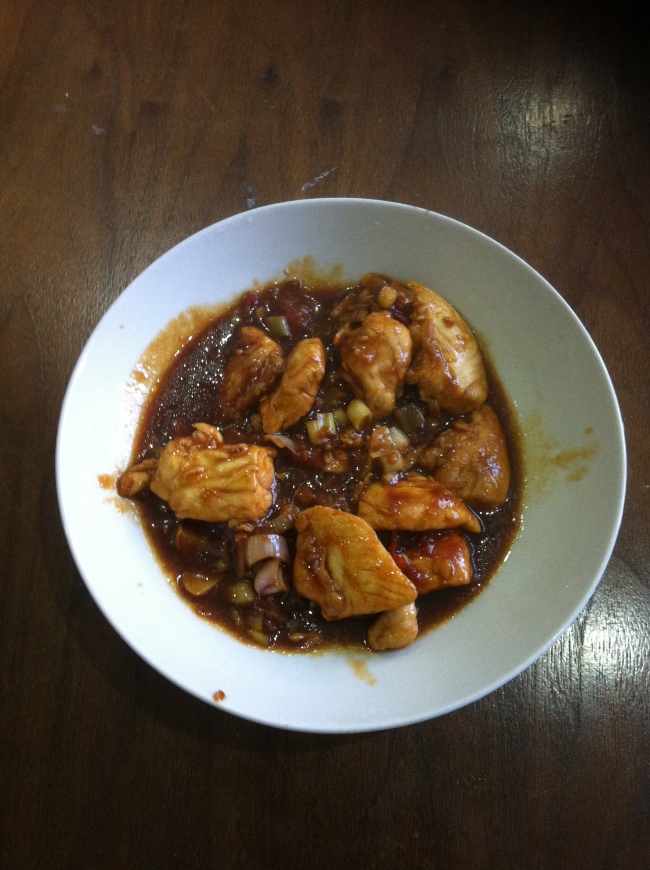Lemongrass is just such a versatile plant. Its flavour is friendly to both sweet and savoury dishes, and yet it is completely unmistakeable, standing out like an attractive and sociable person in any setting. Even outside of food, it has its uses; the oil is a good insect repellent, especially since it smells better than most alternatives, and also has antiseptic effects.
No wonder it’s so popular in the tropics, where food is strongly flavoured and the bugs are everywhere. The Malays use it liberally to season grilled meats; the Thais put it in their soups. But in my family, lemongrass goes with chicken, and a rich, dark gravy.
I asked my mother for specifics about this recipe, which I rarely do on my own, and now that I have it, there is a striking similarity between her recipe and the Vietnamese recipe for a lemongrass marinade to grill pork with. Of course, as a marinade, the ingredients are properly blitzed and basted; but all the elements are there. How on earth my mom learned this recipe (she doesn’t know any Vietnamese people or restaurants, as far as I know) is a bit of a mystery again. But you know what, I’m not complaining at all. Life is so much poorer without mysteries. And lemongrass chicken.
Being a proper homemaker and cook, she says I ought to use chicken legs with the bones included; the high heat cooking can glean more flavour from the bones. I didn’t do that in the end, but that’s personal preference. I expect chicken wings would do well with this sauce as well, if you brown them first; then the gravy becomes more of a deep-coloured glaze, fragrant with a slight ginger-kick.
Continue reading

